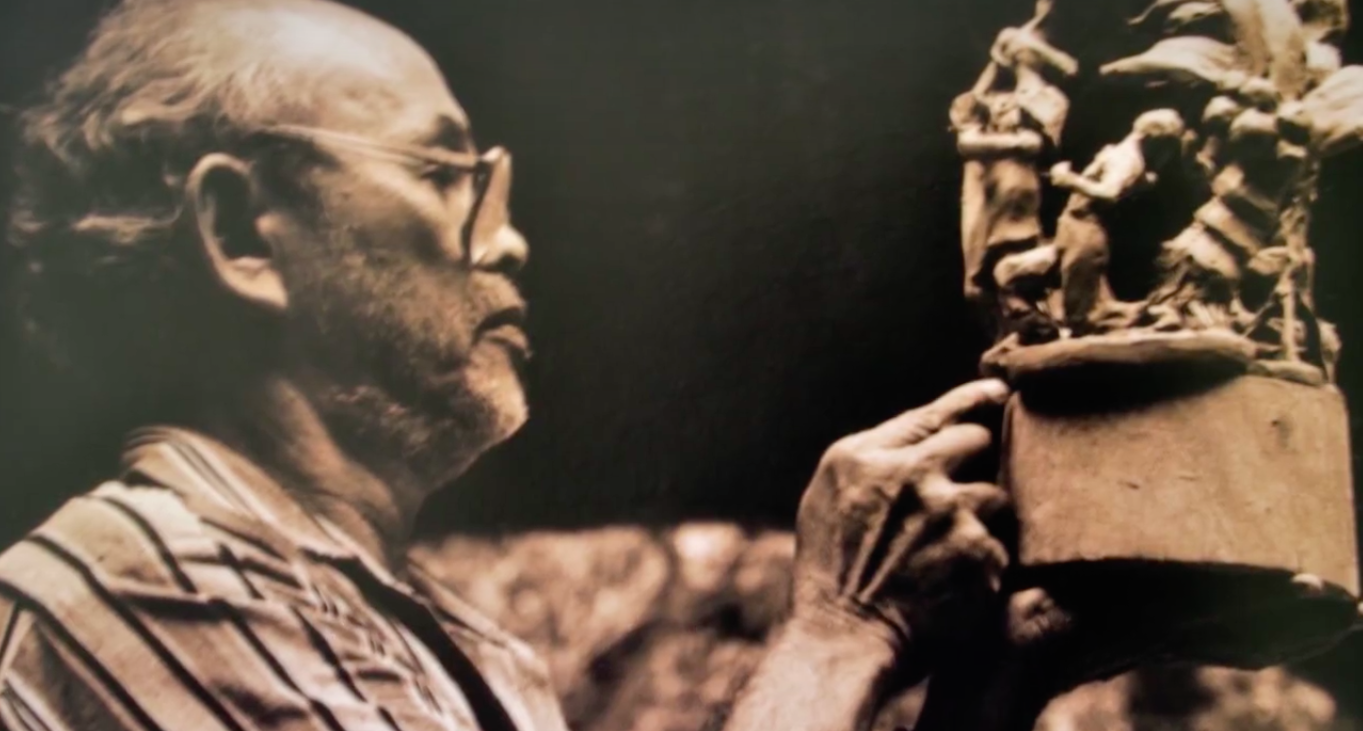
National Artist, recognized “Father of Modern Philippine Sculpture” and esteemed alumnus of the UP College of Fine Arts Napoleon Abueva passed away Friday morning, February 16, at the age of 88.
This was confirmed by the Abueva family to the news media and announced by Cultural Center of the Philippines (CCP) Vice President and Artistic Director Chris Millado in a Facebook post.
According to Abueva’s Facebook page cited by a report from CNN, the sculptor had been confined at the National Kidney Transplant Institute where he was being treated for pneumonia since December 31.
Abueva was born in 1930 in Tagbilaran, Bohol. He had six other siblings, including Jose Abueva, former president of UP.
In a 2003 interview with Dr. Jose Wendell P. Capili, he recounted that his own artistic career began in as early as primary school and high school where they were required to do gardening and he encountered clay for the first time.
He graduated high school at Rafael Palma College in 1949 and entered the UP College of Fine Arts as one of the second batch of Fine Arts students who moved from the old campus in Padre Faura, along with his contemporaries Jose Joya and Federico Alcuaz before he left for Spain. Abueva was mentored by National Artist and sculptor of the Oblation Guillermo Tolentino.
Since the 1950s, his sculptures have been winning prizes in art prizes in local and international competitions and have been installed and exhibited in prominent locations around the world, such as The Sculpture at the United Nations headquarters in New York City. He was an expert in both the academic representational style and modern abstract, and has utilized almost all kinds of material in his art, from hard wood to adobe, metal, stainless steel, cement, marble, bronze, iron, alabaster, coral and brass. According to the National Commission on Culture and Arts, among “the early innovations Abueva introduced in 1951 was what he referred to as ‘buoyant sculpture’—sculpture meant to be appreciated from the surface of a placid pool.”
Some of his major works include Kaganapan (1953), Kiss of Judas (1955), Thirty Pieces of Silver, The Transfiguration (1979), Eternal Garden Memorial Park, UP Gateway (1967), Nine Muses (1994) at the UP Diliman Faculty Center, Celebration of Life at the UP Manila campus, Sunburst (1994) at the Peninsula Manila Hotel, the bronze figure of Teodoro M. Kalaw in front of National Library, and murals in marble at the National Heroes Shrine, Mt. Samat, Bataan. He also did the Blood Compact Monument in Bohol and designed the door handles in all the National Museum galleries.
In 1976, he was named National Artist for Sculpture in the field of Visual Arts at the age of 46, the youngest to be named National Artist.
In the 2003 interview mentioned above, Capili asked Abueva how he wished to be remembered. Citing the inscription to one of his designs—a door to a parish chapel—Abueva said: “Whatever desire is expressed in form, one conceives in realm of design. The mind in the hand can falter or surpass: if you answer which one and how much was done by love.”
Abueva is survived by his wife, Cherry Abueva, and three children, Amihan, Mulawin and Duero. His wake will be in the Delaney Hall of the UP Diliman Chapel starting Friday, after 8 p.m.
